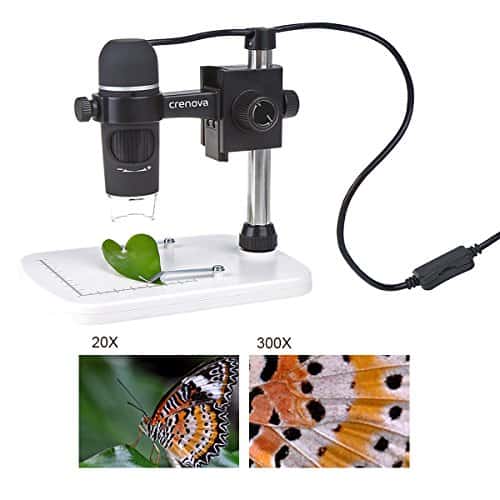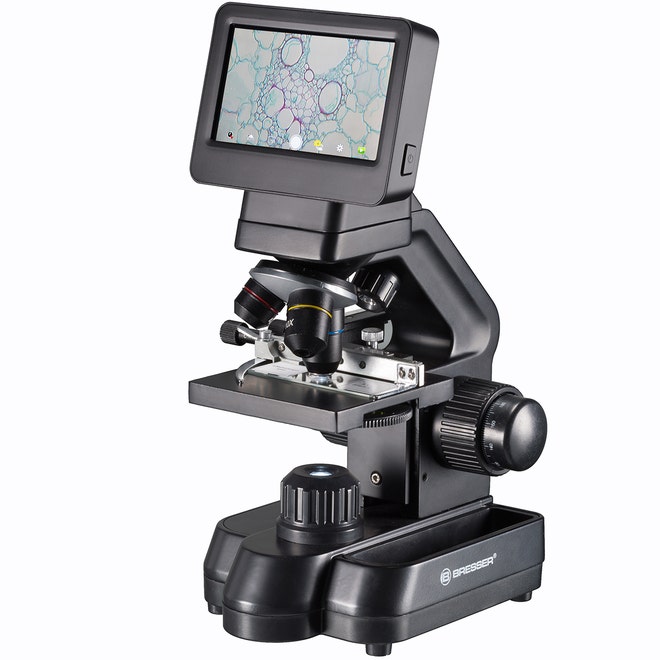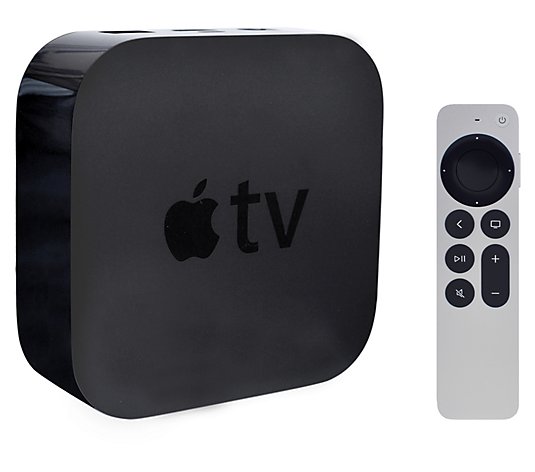Discover Pandipedia
Pandipedia is the world's first encyclopaedia of machine generated content approved by humans. You can contribute by simply searching and clicking/tapping on "Add To Pandipedia" in the answer you like. Learn More
Expand the world's knowledge as you search and help others. Go you!

Inflation affects everyday consumers primarily by eroding their purchasing power, leading to higher costs for essential items like food, energy, and fuel. As noted, 'the cost of living is more than 11% higher than it was a year ago,' and individuals with specific spending habits may experience even greater increases in their personal inflation rates, which may not be fully reflected in overall inflation statistics[3].
Moreover, inflation disproportionately impacts lower-income households, for whom essentials account for a larger portion of their spending. For instance, energy, food, and drink comprise around 15% of lower-income households' budgets compared to 10% for wealthier households, resulting in a sharper inflation experience for the less affluent[3][4][5].
Let's look at alternatives:
- Modify the query.
- Start a new thread.
- Remove sources (if manually added).
- Request a manual search from our human research team.

Festivals serve as significant cultural events that shape and reflect community identity, offering a platform for social connection, cultural continuity, and even economic benefits. This report synthesizes various aspects of how festivals impact community identity, drawing insights from studies on community festivals and urban cultural heritage festivals.
Festivals as Transformative Experiences
Community festivals, as described in one source, are traditionally organized by and for local communities, often emphasizing themes that resonate with community members. These gatherings provide residents with opportunities to engage socially, enhancing community cohesion and building social capital. When residents participate in these events—whether as volunteers, attendees, or organizers—they often develop a more profound sense of belonging and pride in their local identity. The engagement fosters social interactions, relationship building, and the development of networks that contribute positively to community well-being and identity[1].
The sentiment around participation is emphasized further, noting that residents who are actively involved in festivals are generally those who perceive the social impacts of these events more positively. They experience benefits such as enhanced community identity, cohesion, and opportunities for entertainment and socialization. This can be seen in diverse subgroups within populations, each experiencing festivals differently, leading to varied perceptions of their impacts[1].
Urban Cultural Heritage Festivals and Identity
Urban cultural heritage festivals, such as London's Notting Hill Carnival, illustrate how larger scale events not only serve as entertainment but also play a crucial role in expressing and shaping identity. These festivals are platforms for showcasing the values and traditions of diverse cultural backgrounds and can promote community cohesion among participants. The Notting Hill Carnival, rooted in African Caribbean culture, has evolved from a local celebration into a significant cultural event that attracts a wide audience, thus contributing to a sense of belonging and shared identity among different demographic groups. The carnival embodies the integration of various cultures, echoing sentiments of unity amidst diversity[3].
Such festivals are important for representing communal values and creating a collective identity that transcends individual backgrounds. They celebrate cultural heritage and offer spaces for historical narratives to be performed and experienced, which fosters stronger ties among community members and cultivates pride in their shared cultural identity[3]. Festivals become not only a means to celebrate cultural legacies but also a way to negotiate contemporary identities in an increasingly globalized world[2].
Challenges and Balancing Acts
While festivals can enhance community identity, they also present challenges that can impact the sense of belonging. Issues such as gentrification and the commercialization of festivals may lead to tensions within communities. For example, the Notting Hill Carnival has encountered challenges as the neighborhood experiences changes due to rising property values and a shift in demographic composition. Some long-term residents feel alienated by the influx of newcomers who may not share the same appreciation for the cultural significance of the carnival[3]. These dynamics highlight the delicate balance between cultural celebration and the risk of losing authentic community connections as urban environments evolve.
Moreover, concerns regarding the negative impacts of large gatherings, such as anti-social behavior and logistics, can detract from the positive community impacts of festivals. The intensity of events can sometimes overshadow their intended community-building functions, leading to questions about their sustainability and long-term benefits for social cohesion[3].
Conclusion: Festivals as Catalysts for Identity Formation
Overall, festivals are pivotal in shaping and reinforcing community identity. They provide spaces for cultural expression, social interaction, and community building, thereby enhancing social capital and cohesion within communities. As evidenced by community and urban cultural heritage festivals, these events play a crucial role in expressing communal values and fostering diverse identities. However, the challenges faced by communities in adapting to changes that accompany these festivals must be navigated thoughtfully to preserve the authentic cultural connections that festivals aim to celebrate. The interplay between celebration and identity, alongside the evolving urban landscape, continues to shape how communities forge and redefine their identities in contemporary contexts.
Let's look at alternatives:
- Modify the query.
- Start a new thread.
- Remove sources (if manually added).
- Request a manual search from our human research team.
Get more accurate answers with Super Search, upload files, personalised discovery feed, save searches and contribute to the PandiPedia.

The Examined Life
One of the most central tenets of Socratic philosophy is the concept of the 'examined life.' Socrates famously proclaimed that 'the unexamined life is not worth living' during his trial, highlighting the importance of self-reflection and critical inquiry into one's own beliefs and values[1]. He believed that engaging in profound introspection, questioning one's own assumptions, and reflecting on moral choices were essential to personal growth and understanding what constitutes a good life[5]. This continuous process of self-examination allows individuals to align their beliefs with virtues and moral principles, fostering a deeper understanding of self and society.
The Socratic Method
Socrates’ method of inquiry, now known as the Socratic Method, is a form of cooperative dialogue aimed at stimulating critical thinking and illuminating ideas through questioning. Instead of providing direct answers, Socrates engaged others in dialogue, asking probing questions to help them recognize contradictions in their thoughts and beliefs. This dialectical method serves two primary functions: it helps uncover deeper truths and encourages participants to think critically about their reasoning[1][6].
The Socratic Method is distinguished by its emphasis on fostering self-reflection, humility, and open-mindedness, pushing individuals to confront their ignorance[6]. By challenging conventional wisdom, Socrates aimed to draw out underlying beliefs and stimulate intellectual growth among his peers.
Knowledge and Virtue

For Socrates, knowledge was intrinsically linked to virtue. He posited that true knowledge entails an understanding of moral excellence, and that the pursuit of wisdom is fundamentally about striving to be virtuous. Socrates argued that to know what is good is to do good; hence, he believed that no one willingly does wrong if they genuinely know what is right[3]. This idea implies that ethical behavior arises from a deep understanding of knowledge and moral principles.
This connection between knowledge and virtue presents Socrates as both a philosopher and a moral teacher. He maintained that self-knowledge and moral understanding are crucial for achieving a fulfilling and virtuous life, thus emphasizing the ethical dimensions of intellectual pursuit[5].
Socratic Ignorance

Socrates is often associated with the paradox of Socratic ignorance, encapsulated in his famous assertion, 'I know that I know nothing.' This statement doesn't denote a lack of knowledge or understanding; rather, it reflects his belief that recognizing one's own ignorance is a vital first step toward acquiring true wisdom. For Socrates, the acknowledgment of one's limitations motivates a lifelong pursuit of knowledge and encourages a humble approach to learning[6].
The Role of the Philosopher

In Socratic thought, philosophers play a crucial role in society. Socrates advocated for leadership grounded in wisdom and moral integrity—what can be referred to as the idea of the 'philosopher-king.' He believed that those who govern should be guided by knowledge and virtue rather than personal ambition or power motives[6]. This perspective emphasizes that a just and harmonious society is achieved through rulers who possess a deep understanding of ethics and the human condition.
Ethical Living and Justice

Socrates emphasized the importance of ethical living and the pursuit of justice. He sought to define key moral concepts, such as piety, justice, and virtue, through dialogue and critical examination. While he did not provide definitive answers, his inquiries shed light on the complexities of these concepts[1][5]. He argued that living a moral life is not merely about following societal norms but engaging in thoughtful consideration of one's actions and their impact on oneself and the community.
Socrates believed that the cultivation of virtues such as courage, wisdom, and temperance is essential for individuals to realize their potential and contribute positively to society[3][5]. This moral framework underlies his criticism of the superficial nature of wealth and power, advocating instead for a life focused on ethical principles and self-improvement.
Influence and Legacy
Socrates' method of inquiry and his emphasis on ethics laid the groundwork for much of Western philosophy. His influence can be seen in the works of his students, most notably Plato, who captured Socratic dialogues and ideas in his works. However, interpretations of Socrates' teachings have evolved over centuries, leading to varied interpretations by subsequent philosophers[2][4].
Despite the passage of time, Socrates' ideas continue to hold significant relevance, inspiring contemporary discussions on ethics, the nature of knowledge, and the importance of critical thought. His legacy lives on in education, particularly in techniques that emphasize questioning and dialectical engagement as essential tools for fostering understanding and moral reasoning[5][6].
In conclusion, Socrates' key ideas revolve around the importance of self-examination, the relationships between knowledge and virtue, the role of questioning in philosophical inquiry, and the commitment to ethical living. His contributions have irrevocably shaped the landscape of Western thought, making him a seminal figure in the history of philosophy.
Let's look at alternatives:
- Modify the query.
- Start a new thread.
- Remove sources (if manually added).
- Request a manual search from our human research team.

ASMR (Autonomous Sensory Meridian Response) can be triggered by various sounds that induce relaxation and pleasurable tingling. Common auditory triggers include whispers, tapping, and crinkling sounds. For instance, the gentle sound of fingernails tapping on a surface and the soft rustle of paper can evoke tingling sensations, creating a calming experience for many individuals[2][4].
Other auditory triggers that people often respond to are brushing sounds, water sounds like rain or streams, and page turning[3][5]. These sounds, along with personal attention scenarios and role-play ASMR, contribute to the diverse array of stimuli that can elicit an ASMR reaction[1][4].
Let's look at alternatives:
- Modify the query.
- Start a new thread.
- Remove sources (if manually added).
- Request a manual search from our human research team.
Comprehensive Report on Microsoft's Florence Model
Introduction
Microsoft has introduced a groundbreaking new model known as Florence, which has garnered significant attention and acclaim in the realm of computer vision technologies[2]. This report aims to delve into the reasons behind the excellence of Microsoft's Florence model, highlighting its key features, advancements, and the impact it has had on the field.
Advancements in Computer Vision Technologies

Microsoft's Florence model represents a significant leap in the field of computer vision by bridging the gap between current visual recognition capabilities and real-world application demands. The model leverages recent progress in deep learning, transfer learning, and model architecture search[2] to enhance its performance and versatility.
Key Features and Capabilities

The Florence model expands representations from coarse to fine details, covering a wide range of visual[5] content from static images to dynamic videos. It incorporates multiple modalities such as captions and depth information, enabling it to excel in various computer vision tasks[1]. Additionally, the model offers features like automatic captioning, smart cropping, background removal, and real-time alerts with responsible AI controls[3].
Training and Adaptability
One of the key strengths of the Florence model lies in its extensive training with billions of text-image pairs[3], which has enabled its seamless integration into Azure Cognitive Services for Vision[7]. This training approach has equipped the model to handle different levels of detail and semantic understanding[6], making it adaptable for a wide array of vision tasks[6].
Achievements and Performance

Microsoft's Florence model has achieved new state-of-the-art results in[1] numerous benchmarks, outperforming previous large-scale pretraining approaches[5] across various visual and visual-linguistic tasks. The model's comprehensive multitask learning objectives[6] and universal image representation[6] make it a powerful tool for advancing computer vision research and development.
Multimodal Intelligence and Vision-Language Modeling

Florence is at the forefront of building foundation models for Multimodal Intelligence[8], focusing on vision-language modeling to enhance visual and linguistic understanding. By leveraging recent progress in computer vision and natural language processing[8], the model has shown promising results in tasks like image captioning and video-language understanding.
Conclusion
In conclusion, Microsoft's Florence model stands out as a revolutionary advancement in computer vision technologies[2], offering a unified approach to tackling a wide range of vision tasks with unparalleled performance and adaptability. With its state-of-the-art capabilities, achievements in benchmarks, and groundbreaking features, the Florence model has solidified its position as a pioneering tool in the field of computer vision.
Let's look at alternatives:
- Modify the query.
- Start a new thread.
- Remove sources (if manually added).
- Request a manual search from our human research team.
Let's look at alternatives:
- Modify the query.
- Start a new thread.
- Remove sources (if manually added).
- Request a manual search from our human research team.
Get more accurate answers with Super Search, upload files, personalised discovery feed, save searches and contribute to the PandiPedia.

Tallow candles were replaced by sperm or colza oil, though both were expensive[1]. The advances in refining petroleum, and the exploitation of its resources, led to 'earth-oil,' in some form, being employed for lighthouse purposes[1].
The invention and improvement of the Argand burner further helped these efforts, and paraffin became universally utilized as the cheapest and most efficient illuminant known[1].
Let's look at alternatives:
- Modify the query.
- Start a new thread.
- Remove sources (if manually added).
- Request a manual search from our human research team.

To choose the right foundation shade, start by identifying your skin tone and undertones. Skin tone is typically classified as fair, light, medium, or deep, while undertones can be warm, cool, or neutral. A simple way to determine your undertone is to check the color of your veins; blue suggests cool undertones, while green indicates warm ones[4].
When trying foundations, apply a few shades along your jawline to see which one blends seamlessly with your skin. Always check the color in natural light to ensure it looks accurate, as indoor lighting can mislead you[1][3]. Finally, consider your specific skin needs and desired coverage[2].
Let's look at alternatives:
- Modify the query.
- Start a new thread.
- Remove sources (if manually added).
- Request a manual search from our human research team.
Amscope OMAX 40x-2000x Lab LED Binocular Microscope
This microscope offers up to 2000x magnification and is constructed mainly from metal, featuring LED lighting with dimmer controls for better visibility. It comes fully assembled and is ideal for home and school use.
Plugable USB-MICRO-250X
A compact digital microscope with a 2.0-megapixel camera, offering up to 250x magnification. It features a flexible arm for easy use and adjustable LED halo lighting for optimal illumination of specimens[4].
Carson Pocket Micro
A classic and affordable pocket microscope that allows magnification from 20x to 60x. It is user-friendly, making it suitable for collectors and casual observation[2].

Discovery Toys Explore IT!
Designed for children, this pocket microscope is affordable and easy to use, making it perfect for engaging kids with basic microscopy outdoors[2].

Bresser Biolux NV 20x-1280x
A beginner-friendly microscope with a wide magnification range from 20x to 1280x, featuring an LED lamp and built-in camera for capturing images of observed specimens[1].
Celestron CM800 Compound Microscope
A lab-grade microscope with a magnification range of up to 800x, including adjustable LED illumination and portability through AA battery power. It's ideal for college students and for outdoor use[1].
Max-See Digital Wi-Fi Microscope
This microscope enables wireless viewing on a smartphone or tablet, providing a close look without needing an eyepiece, making it portable and user-friendly for educational purposes[1].
Amscope Trinocular Microscope
Designed for advanced users, this microscope has a magnification capability that varies from 40x to 2000x, and includes a camera port to capture images or video for educational activities[3].
Swift SW380T Trinocular Microscope
With up to 2500x magnification and six levels of options including 1000x, this research-grade microscope is equipped for clinic-level use and allows for camera attachment[1].
Amscope Beginner Microscope Set
Aimed at young scientists, this set includes a robust beginner microscope with up to 200x magnification and comes with smart slides that display educational content to spark interest in biology[3].
Carson’s zOrb
This egg-shaped microscope is designed for scanning surfaces with an 81x magnification and can project images onto a monitor, ideal for examining documents or collectibles outdoors[2].
Opti-Tekscope OT-HD
A compact digital microscope with a 1600x1200 resolution, designed for handheld and table use with adjustable lighting, suitable for various observational needs[4].
Crenova UM012C Microscope
Equipped with a 5-megapixel camera for clear images and up to 300x magnification, this microscope is compatible with both Windows and Mac OS for easy image capture and observation[4].
Celestron Portable Microscope
Features a durable design and a range from 20x to 200x magnification, equipped with a USB connection for digital observations, making it convenient for outdoor use[4].
Amscope M100C-LED Monocular Microscope
This monocular microscope allows magnification from 40x to 1000x, featuring a durable metal construction and LED illumination, perfect for studying various specimens[4].
S20 Stereo Microscope
A beginner-friendly stereo microscope providing 20x power with easy focus control, ideal for viewing larger objects such as bugs or leaves with built-in LED illumination[1].
Laboratory Digital Microscope - CMAX ABS
With a magnification of 40x to 800x and digital capability, this model allows for easy capturing of observations and is suitable for more advanced studies[3].
National Geographic Kids Microscopic Set
This set is perfect for introducing kids to microscopy, featuring a robust build and up to 200x magnification for exploring leaves, insects, and more outdoors[3].
Bresser Biolux Touch Microscope
A modern microscope featuring a 5MP digital camera and a touchscreen interface for viewing microscopic subjects on a connected display, making it engaging for users[1].
Amscope Beginner’s Microscope with Smart Slides
Aimed at children, this microscope allows up to 200x magnification and includes interactive slides to educate young learners about biology and nature[3].
Carson MicroBrite Plus 60x-120x Microscope
Lightweight and portable, this pocket microscope offers magnification up to 120x, making it suitable for small-scale observations and outdoor adventures[2].
OMAX 40x-2000x LED Lab Microscope
Provides a high level of magnification with rugged design and LED illumination, suitable for educational and amateur usage in various conditions[3].
Let's look at alternatives:
- Modify the query.
- Start a new thread.
- Remove sources (if manually added).
- Request a manual search from our human research team.

Roku Streaming Stick 4K
The best overall streaming device due to its excellent performance, broad app support, and user-friendly interface, often appreciated for its simplicity and speed[5].

Amazon Fire TV Stick 4K Max
A top choice for Amazon Prime users, it offers high-definition streaming with support for Alexa voice control and a user-friendly interface[2][4][7].
Apple TV 4K
Recommended for Apple users, boasting integration with the Apple ecosystem and a seamless user interface. It supports a variety of streaming services and features high-quality video[4][7].
Google TV Streamer
Offers a powerful platform with a sleek interface, excellent for casting and controlling smart home devices alongside high-definition streaming[4][5].
Roku Ultra
Known for advanced features including Ethernet connectivity and extensive media options, making it a solid choice for those seeking a more premium experience[5][7].

Amazon Fire TV Cube
Combines streaming functionalities with Alexa voice assistant capabilities, enabling hands-free control of your entertainment setup[3][4][7].
Nvidia Shield TV Pro
Ideal for high-end users who seek great performance, 4K HDR streaming, and gaming capabilities, acting as an advanced Android TV device[3][7].

Roku Express 4K
A budget-friendly option that still supports 4K streaming, providing users with a solid attempt at high-quality content without breaking the bank[3][6].

Chromecast with Google TV
A versatile device for users who prefer casting content from their devices, complete with an intuitive interface and search functionality[3][5][7].

Amazon Fire TV Stick Lite
An economical choice for those who want to quickly boost streaming capabilities without 4K resolution, still featuring Alexa support[3][7].

Roku Streambar
Functions as both a streaming device and a soundbar, ideal for enhancing audio while providing access to a wide range of streaming services[3][6].
Apple TV (3rd Generation)
An updated model that excels in integrating streaming services and offers a high-quality interface for Apple users[5].

Roku Streaming Stick 4K Plus
Comes with an enhanced remote that supports voice commands and offers a similar experience to the original Streaming Stick 4K[4][5].

Tivo Stream 4K
A unique player that integrates with live TV services and offers a different interface for content recommendations[4][7].
Fire TV Stick (3rd Generation)
Offers HD streaming and essential features for users looking for an affordable option without 4K support[3].

Roku Express
A simple and cost-effective device for those not needing 4K, providing a wide range of channels and easy navigation[3][5].

Onn 4K Google TV Streaming Box
A surprisingly well-performing budget option featuring 4K streaming at an accessible price point[4].
Amazon Fire TV Stick HD
A more affordable option with 1080p streaming, offering a good selection of channels for casual viewers[4].
Google Chromecast with Google TV HD
Designed for those who want to upgrade older TVs to smart capabilities at an economical price[4].
Roku Streaming Stick Plus
An evolution of the original stick, it offers a reliable performance and is noted for its ease of use and expansive app selection[5][6].

Amazon Fire TV Stick 4K (2nd Generation)
A strong performer ideal for users who want high-quality streaming and integration with Amazon services[2][3].
Nvidia Shield TV
Known for its gaming capabilities alongside streaming, appealing to users who want a multi-functional entertainment device[4][7].

Fire TV Stick 4K Max (2nd Generation)
Features a slightly improved performance over its predecessor, with excellent video quality[5][6].
Let's look at alternatives:
- Modify the query.
- Start a new thread.
- Remove sources (if manually added).
- Request a manual search from our human research team.



























































